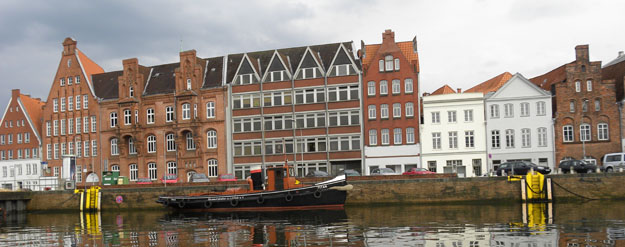Lübeck, Germany–Do not adjust the image above. It is of the Holstein Gate (“Holstentor”) on the western side of the Free and Hanseatic City of Lübeck. On the left is a side view and the right is from the front. It is a double-towered medieval gate which has suffered some serious tilting because its foundations (one under each tower) were built on glacial clays in marshy terrain. It is an emblematic German structure (it is on a commemorative German two-euro coin) and northern Europe’s equivalent to the Leaning Tower of Pisa.
The advantages of building a city on clay? This is what they use to make the bricks!






Lübeck is indeed looking funny in this regard. Especially from a little distance, you can “appreciate” all those towers, each askew to the others. Some church tower (I think it’s the Cathedral) shows some noticable bulge at one side, where they had compensated during building for the already tilting tower.
By the way, the Holstentor is not generally on 2 Euro coins (only on a commemoratice coin) But it was on the old 50 DM note, although completly even. I was very surprised when I saw the real thing, with it’s sagging middle, for the first time…
Thanks for the comment, effjot. I just added “commemorative” to the text about the coin. Good to talk to another geologist blogger!
It’s sad that there is basically nothing about the geology of Lübeck available on the internet. Do you know what the old-town hill consists of? Is it also clay (or till), or sand? I recall a friend in Lübeck speaking of the town being basically a pile of sand.
I heard on this trip that it is sand spread out on clay for the old-town hill, but read nothing on it. Whatever it is, it hasn’t been very stable!